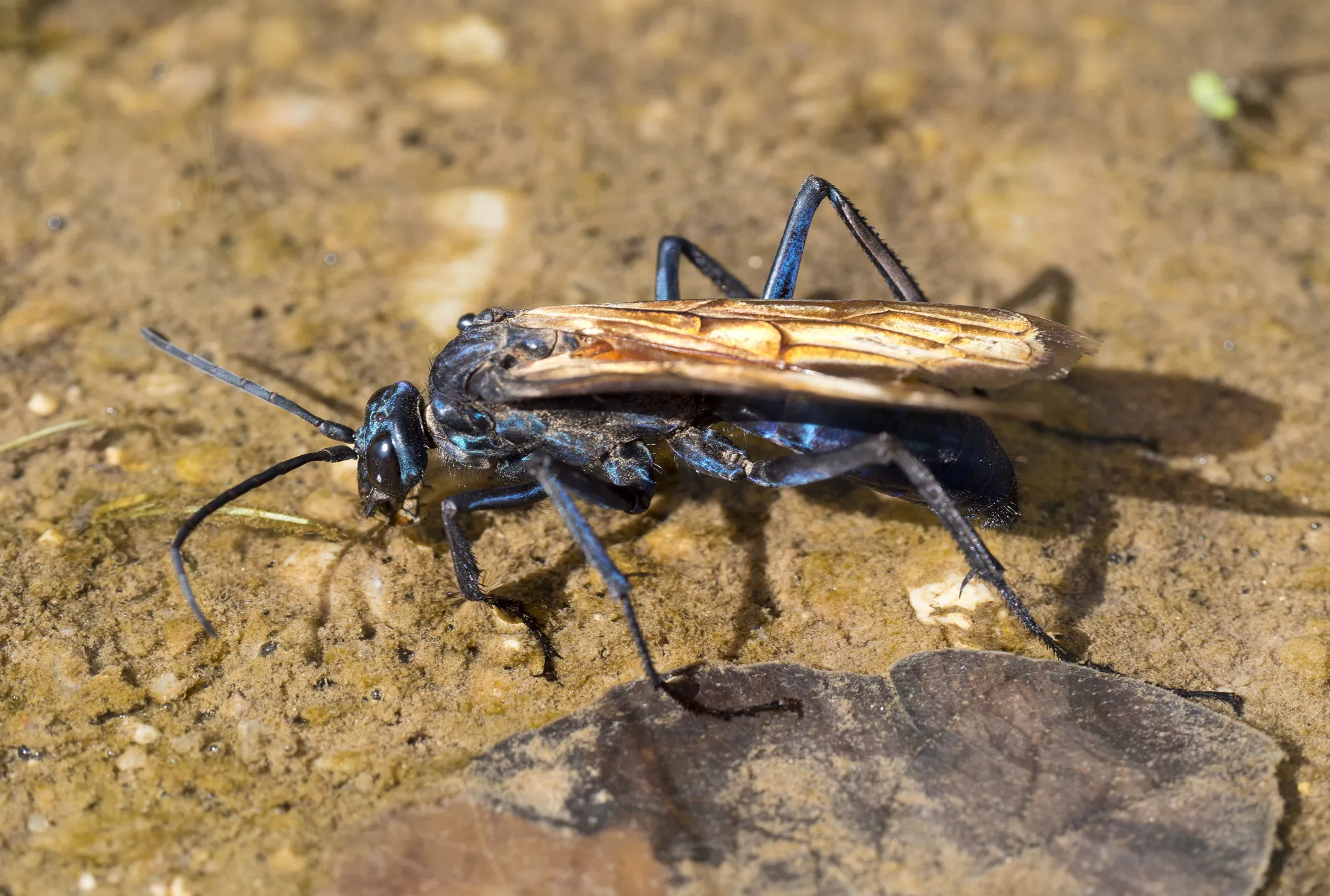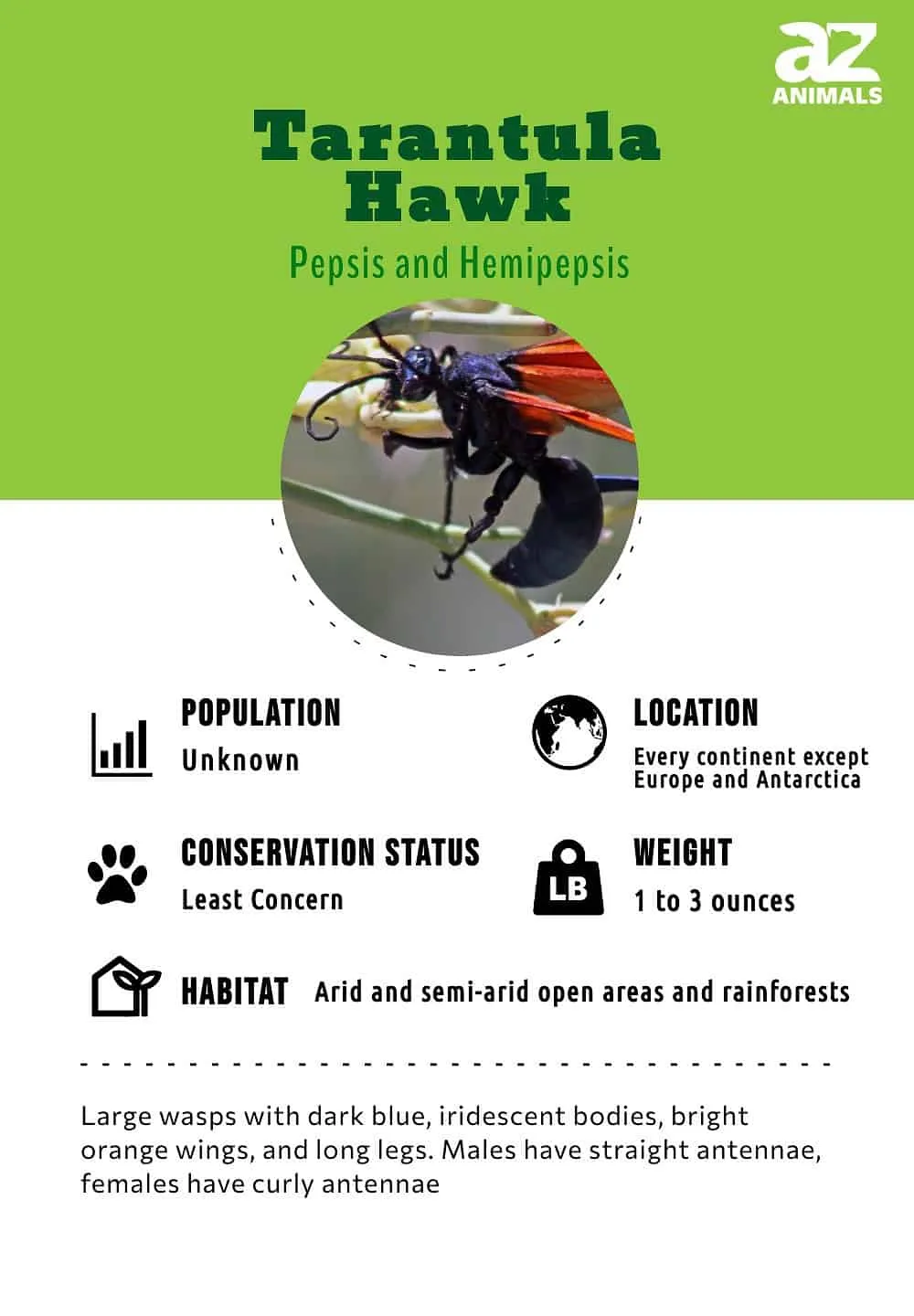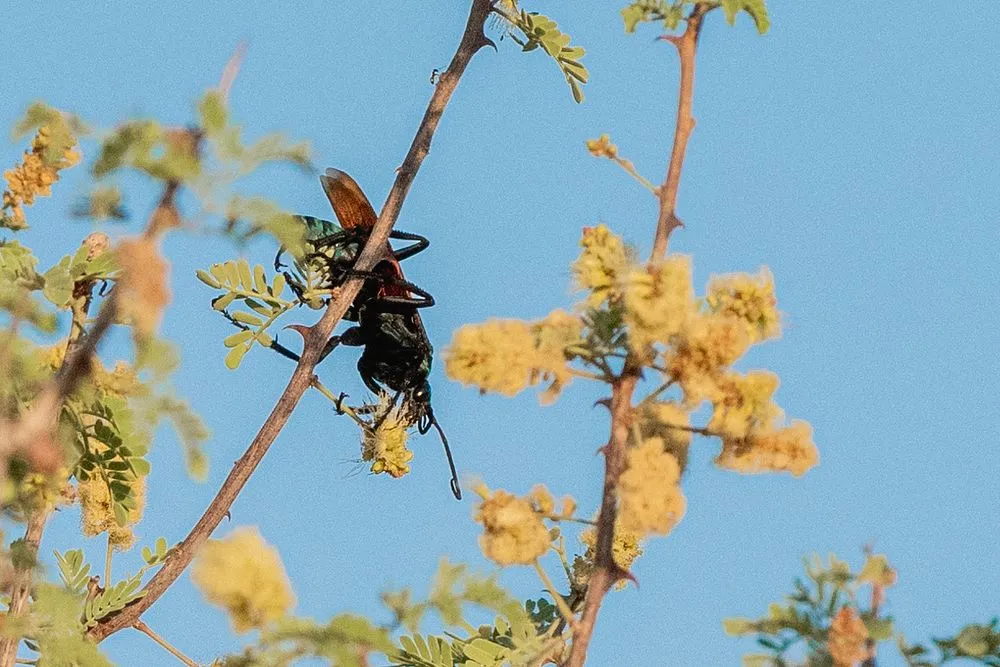What is a Tarantula Hawk?
The tarantula hawk is a remarkable insect, a large, strikingly colored wasp belonging to the family Pompilidae. These wasps are renowned for their hunting behavior, specifically their predation on tarantulas. The female tarantula hawk paralyzes a tarantula with a sting, then drags it to a burrow, where it lays a single egg on the spider’s abdomen. The larva that hatches feeds on the living tarantula, eventually killing it. This parasitic relationship is a fascinating example of nature’s intricate cycles. The tarantula hawk’s behavior showcases a remarkable combination of hunting prowess, precision, and the perpetuation of its species through a gruesome yet effective reproductive strategy. Their presence is an indicator of a healthy ecosystem, although their sting is known to be one of the most painful insect stings on earth, the tarantula hawk plays a vital role in controlling tarantula populations.
Physical Characteristics of Tarantula Hawks
Tarantula hawks are easily identifiable due to their large size and vibrant coloration. They typically range from 1 to 2 inches (2.5 to 5 cm) in length. The most common species display a deep, metallic blue or black body with striking orange or rust-colored wings. This bold coloration serves as a warning to potential predators, signaling the wasp’s potent sting. The wasps possess strong legs and mandibles, adapted for handling tarantulas and digging burrows. The antennae are long and sensitive, aiding in navigation and prey detection. The stinger, used for both defense and subduing tarantulas, is a formidable weapon. The physical characteristics of the tarantula hawk are perfectly adapted to its lifestyle and hunting behavior, making it a formidable predator in its environment. This striking appearance is one of the reasons why these wasps are so recognizable and often feared.
Understanding the Habitat of Tarantula Hawks

Tarantula hawks thrive in specific habitats that support both their own needs and the presence of their primary prey, tarantulas. They prefer arid and semi-arid environments, typically found in the southwestern United States, parts of South America, and other regions with similar climates. These wasps require areas with suitable nesting sites, often including sandy or loamy soil for burrowing. The presence of vegetation, although not overly dense, provides cover and potential hunting grounds for tarantulas. The availability of water sources is also crucial for the tarantula hawk’s survival. The habitat of the tarantula hawk is a complex interplay of climate, soil type, and the availability of prey, making their distribution dependent on a specific set of environmental conditions. Understanding these habitat requirements is key to mapping their distribution and assessing the health of their populations.
Geographic Distribution of Tarantula Hawks
The geographic distribution of tarantula hawks is primarily concentrated in regions with the right climatic and ecological conditions. In North America, they are most commonly found in the southwestern United States, including states like Arizona, New Mexico, Texas, and California. Their range extends into parts of Mexico. In South America, various species are distributed across different countries. Their presence is linked to the distribution of tarantulas, the primary food source for their larvae. The distribution patterns can be influenced by factors like temperature, rainfall, and the availability of suitable nesting sites. The exact range of any particular tarantula hawk species depends on its specific environmental needs and the availability of its prey. Accurate mapping helps scientists to monitor population health and understand changes in their habitats and distribution patterns.
Mapping the Tarantula Hawk’s Habitat
Creating a tarantula hawk habitat map involves combining various data points to pinpoint areas where the wasp is likely to be found. This mapping process typically uses information on climate, vegetation, and soil type, alongside known tarantula distributions. Geographic Information Systems (GIS) are often utilized to analyze these factors and create predictive models. Field surveys and observations are crucial to validate these models and refine the maps. Citizen science initiatives can also contribute by gathering location data from public sightings. Habitat maps help researchers understand the species’ range, identify potential threats, and plan conservation efforts. These maps are constantly updated as new data becomes available, reflecting the dynamic nature of the wasp’s environment and populations. The integration of different data sources, from climate data to observed sightings, enhances the accuracy and utility of the tarantula hawk habitat maps.
Factors Influencing Tarantula Hawk Habitat

Several factors shape the ideal habitat for tarantula hawks. Climate plays a significant role, with preferences for arid and semi-arid environments where tarantulas thrive. Soil composition is another important factor, as the wasps require suitable soil for digging their burrows. Vegetation type influences prey availability and provides cover. The presence of potential nesting sites, such as rocky outcrops or areas with sandy soil, is also vital. The availability of water is another crucial factor. Human activities, such as habitat destruction, pesticide use, and climate change, can pose significant threats to the tarantula hawk’s habitat. Understanding these factors is crucial for assessing the health of the tarantula hawk populations and formulating conservation strategies to protect their habitat. The interplay of these elements determines where the tarantula hawks can survive and thrive.
Climate and Temperature Preferences
Tarantula hawks have specific climate and temperature preferences that influence their habitat selection. They are typically found in warm climates, with average temperatures often ranging from 70°F to 100°F (21°C to 38°C) or higher. These wasps thrive in areas with low humidity and abundant sunshine. The distribution of these wasps is limited by cold temperatures, and they are rarely seen in regions that experience severe winters. Extreme heat does not seem to bother them, as they are well-adapted to desert environments. The optimal climate for tarantula hawks involves a balance of warmth, sunlight, and manageable humidity. The ability to withstand high temperatures is a key adaptation that allows them to hunt and reproduce in their preferred habitats. Their climate preferences also directly correlate with the climate preferences of their prey, tarantulas.
Vegetation and Prey Availability
Vegetation and prey availability are critical factors in the tarantula hawk’s habitat. The type of vegetation in an area can affect the tarantula population, which serves as the primary food source for the wasp’s larvae. Sparse or moderate vegetation, such as grasses, shrubs, and scattered trees, provides the ideal hunting grounds for tarantulas. Areas with dense vegetation are less favorable for tarantula hawks. The presence of certain plants, such as those that attract other insects that serve as alternative food sources for the wasps, could also impact the habitat’s suitability. The availability of tarantulas, in sufficient numbers and of a suitable size, is crucial for the wasp’s survival. The tarantula hawk’s habitat must support both tarantulas and the environmental conditions that allow them to thrive. The interdependence between the wasp and its prey drives habitat selection, and the vegetation plays an important role in that dynamic.
Creating a Tarantula Hawk-Friendly Environment

While it’s challenging to directly ‘create’ a habitat for tarantula hawks, there are steps to make an environment more welcoming. Maintaining natural landscapes with suitable vegetation and soil types is key. Avoiding the use of broad-spectrum pesticides helps protect both the tarantula and the tarantula hawk. Preserving native plant species and minimizing habitat disruption are essential. Providing access to water, such as a shallow dish, can be beneficial. Educating people about the role of these wasps in the ecosystem can foster respect and appreciation for these insects. Creating an environment that promotes biodiversity and supports the tarantula population will indirectly benefit tarantula hawks. Creating a tarantula hawk-friendly environment is less about direct action, and more about protecting the broader ecosystem that supports it.
Protecting and Conserving Tarantula Hawk Habitats
Protecting and conserving tarantula hawk habitats is essential for the species’ survival. This involves several strategies. Habitat preservation and restoration are vital, focusing on maintaining or re-establishing native vegetation and soil structures. Controlling human activities, such as development and intensive agriculture, can minimize habitat loss. Promoting sustainable land management practices, including responsible pesticide use, is another key aspect. Monitoring tarantula hawk populations and their habitats provides essential data for conservation efforts. Public awareness campaigns and educational initiatives can promote understanding and appreciation for the importance of these wasps in the ecosystem. Supporting conservation organizations and initiatives dedicated to habitat protection also contributes to the effort. Conservation efforts must focus on creating sustainable ecosystems, recognizing the vital role of these wasps and the tarantulas they depend on.
The Ecological Importance of Tarantula Hawks
Tarantula hawks play a significant role in their ecosystems. They are natural predators of tarantulas, helping to regulate tarantula populations. They contribute to the overall biodiversity by controlling tarantula numbers. Their presence can indicate a healthy environment and serves as a barometer of ecosystem health. Tarantula hawks are also food sources for other animals, forming a part of the food chain. Their hunting behavior also impacts the behavior and distribution of tarantulas. The ecological significance of tarantula hawks extends beyond their direct role as predators. They are integral to the balance and health of their environment. The presence or absence of tarantula hawks can be used as a valuable indicator for assessing the broader ecological health of their habitats, emphasizing the importance of habitat conservation.
